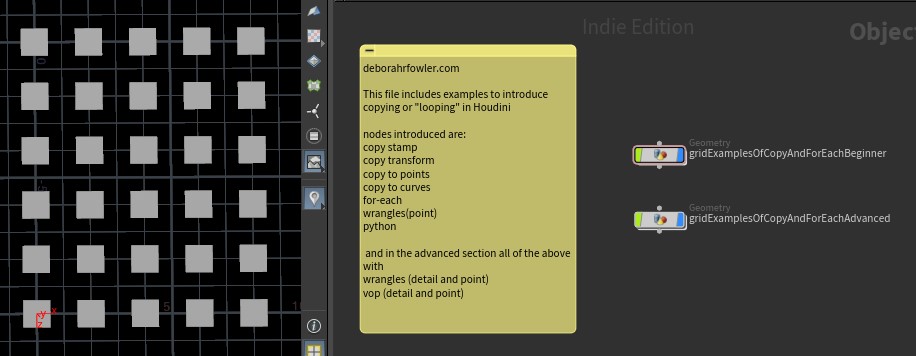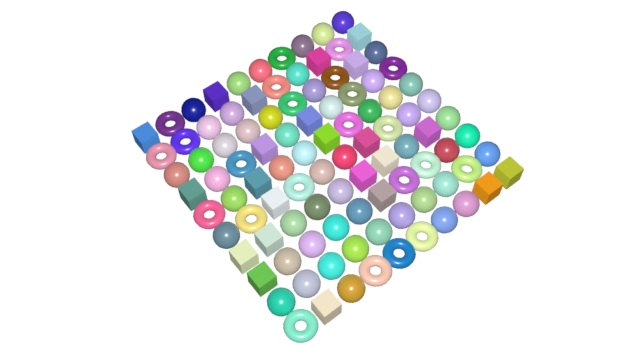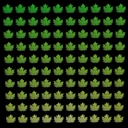Deborah R. Fowler
Houdini Looping - For Each and Variation - also Copy Options
link
Posted Aug 11 2019
Updated Sept 2 2022
Updated Mar 8 2024
There are many ways to create loops in Houdini including the for-each loop.
This page is intended to go over the for-each node, however it is useful to understand the copy nodes beforehand.
I have created a new hip file in 19.5 that is designed to introduce a variety of the options for copying/looping. (Note instancing is covered as a separate topic).

CONTEXT NOTE: The copy stamp node has been a very versatile node (which I refer to as the copy node) and was a superset of the copy transform and copy to points nodes. Functionality was added to the copy to points node that allows variants (explained below) and the copy to curves node was introduced. In addition, for-each, wrangles (vex) and python appear. Further distinctions are made between implicit and explicit loops with regard to vex and vops but that is a top for more advanced users. For beginning users, focus on the container with postfix Beginner.
As of Houdini 19.5, the copy stamp node is no longer available from the tab menu. The documentation recommends using for-each instead (https://www.sidefx.com/docs/houdini/copy/stamping)
Yes, y
opcf /obj/geo1; opadd copy
opcf will Change Folder - you can also use opcd instead (coming from a linux background this is easier to remember). These can be type on separate lines as well.
opcd /obj/geo1
opadd copy
In fact you could create the geo, copy and sphere node setup by typing
opcd /obj; opadd geo; opcd /obj/geo1; opadd copy; opadd sphere; opwire /obj/geo1/sphere1 -0 /obj/geo1/copy1
There are many commands you can use in textport (opset -d on /obj/geo1/copy1 would turn on the display flag), but you have an excellent gui so this would more likely be used for scripting, and you are more likely to use python - if you are interested there is more information on python in Houdini click here.
You can also use a textport command to make the copy with stamp node available in the tab menu in your geo container
opunhide Sop copy
You can also copy it from the example files with ctrl-C ctrl-V
Many ways to do things in Houdini!
On this page I will mainly describe the for-each loop. Please see my page on wrangle nodes for the examples shown without the for-each node construct, but hscript, vex and python (or the example above):
- Building a Snowman
(hscript, vex (wrangle)) and Corresponding video
- Building
a Snowman (python) and Corresponding video
The for-each construct is used here to make a circle of sphere, phyllotactic pattern, and a snowman.
Example file is circleOfSphereAsForEach.hipnc
In this case the "meta" data is used to grab the iterator so that is can be used similarly to the copy number.
In the tab menu there appear For-Each Connected Piece, Named Primitive, Number, Point and Primitive. These are simply presets and you can select the options from the parameters in the for-each nodes.
Other uses of for-each are when you are using "parts" of the specific geometry.
Note that the Houdini documentation has some excellent examples as well. There is an example of a copy star copied onto a sphere in the SideFX documentation.
Since the file did not appear in 17.5 help files, I have created a version to get you started here.
Also, a soccer ball example from SideFX video and start file.
Copy stamping is no longer recommended for variation (https://www.sidefx.com/docs/houdini/copy/stamping). This can be achieved more efficiently with for-each or vex/create attribute/instancing.
- A very simple comparison is given here foreachVsStamp.hipnc
- The for-each method was demonstrated at GDC 2019 with "Intro to Procedural
Modeling: Not Just Another Rock Generator"
- Variation with no "for-each" construct required. More recently and even better method has come to my attention by using the copy to points variants. This is demo'd in the CopyToPointsVariants.hipnc

- exampleOptions.hipnc - shows the foreach method as well as a copy to points methods.
- In addition I have added color assignment and grouping and material overrides.
- added a couple of other examples (H18.5) to add variation to two objects being packed and also textures tinted
bend variation (pigFlower.hipnc)
 scale up or down
(foreachScaleUpDown.hiplc)
scale up or down
(foreachScaleUpDown.hiplc)
Remember to use packed geometry.
